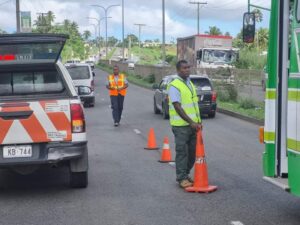Fiji made considerable inroads in antenatal care, school attendance and students’ welfare, but at the same time, a significant percentage of children aged between 1 and 14 are still being subjected to violent discipline according to a survey the findings of which were released this week in Suva.
Developed and supported by UNICEF and technical partners, the Multiple Indicator Cluster Survey 2021, a first for Fiji shows estimates of key indicators including child mortality, health, nutrition, education, child protection, water sanitation, and hygiene among others that decision-makers including technical partner can look to, to inform their policies and programs to benefit children in Fiji going forward.
As per MICS findings, when compared with similar surveys done in Kiribati, Tonga, Tuvalu, and Samoa, at 89 percent Fiji has the highest rate of students aged between 5 and 24 attending school and receiving school-related support such as transport assistance, free textbooks, or free tuition during the 2021 academic year.
Of the countries in the region, Fiji also has the highest coverage in antenatal care, with 96 percent of women having at least one health visit during their last pregnancy.
The survey also revealed areas that need more work such as the discipline mode meted out to children. It found that 81 percent of children in Fiji within the 1-14 age group were exposed to either physical punishment or psychological aggression by their caregivers.
“As well as the physical harm this can cause, the stress associated with violence in early childhood can permanently impair brain development and damage other parts of the nervous system,” Jonathan Veitch, Resident Rep UNICEF Pacific said.
“With the new and disaggregated data available, it is crucial for us to use this data to prioritize our efforts to focus on the most vulnerable, inform policy, and equitably allocate the resources required to address disparities. This is so that all Fijian children are able to survive, thrive and realize their full potential,” Veitch said.
SPC Director Human Rights and Social Development Miles Young spoke highly of the data captured in the 500-page document, in the context of the “people-centered approach” promoted via the recently endorsed 2050 Strategy for the Blue Pacific Continent and the Sustainable Development Goal indicators the survey captures that were not previously available for Fiji.
This includes findings regarding the proportion of women who own a mobile phone (SDG 5.b.1) as a measure of gender equality since it is said to provide women with a level of independence both personal and professional.
In Fiji, the MICS shows that levels of ownership are high across both men and women in the 15-49 years age bracket although more men than women own a mobile phone – 79% of women and 84% of men, Youn said.
“Put simply, if we don’t have relevant and up-to-date information on the populations we work with, then we really are flying blind with our work.”
Another key finding, he highlighted and aligned with SDG 5.6.1 which seeks to see that women and girls make their own decisions regarding sexual relations, contraceptive use, and reproductive health care.
The survey found that 61 percent of women aged 15-49 years in Fiji make their own decisions in such matters.
Young said information captured in the document better informs the work of decision-makers including development partners such as SPC, UNICEF, and UNFPA.
The survey also found among others that 20% of women and 16% of men aged 15-49 years reported having felt discriminated against in 2021 (SDG16.b.1). In terms of the percentage of women and men aged 14-59 years experiencing physical violence of robbery and/or assault in the last 12 months and reporting the last incidence to the police (SDG 16.3.1), 42 percent of women and 44 per cent of men said that they reported their last experience of robbery or assault to the police.
“SPC looks forward to utilising the rich and valuable source of information it contains to inform our work with our members across the Pacific.”
Sentiments that UNFPA Deputy Director Saira Shameem encourages as well, also pointing out the opportunity it provides to strengthen coordination between the data producers and data users.
“It provides the opportunity to bring the ministries of health, women, youth, social development, and finance as well as relevant civil society organisations around a common table to strategise on how to holistically address important issues such as the availability and accessibility of comprehensive sexual and reproductive health services.
“Furthermore, sexual and reproductive health data collected through the MICs, when combined with population data, such as from the census, help in understanding, planning for and shaping the linkages between demographic shifts and sustainable development, and to identify those left furthest behind.”
Permanent Secretary for Economy Shiri Gounder said such stats are useful in national planning and policy-making and useful when gauging the success or failure of policy interventions.
The survey was funded by the New Zealand Government and was represented by New Zealand High Commissioner to Fiji Charlotte Darlow who said that the data would allow PICs to align their development priorities and monitor their progress toward the 2050 Strategy and the UN Sustainable Development Goals.
In carrying out the collation of data, the Bureau of Statistics chose a sample size of 6,000 households across the country. Of the 5,552 households that were occupied, 98.5 percent participated in the survey.
Fiji’s next MICS is due in five years’ time.









